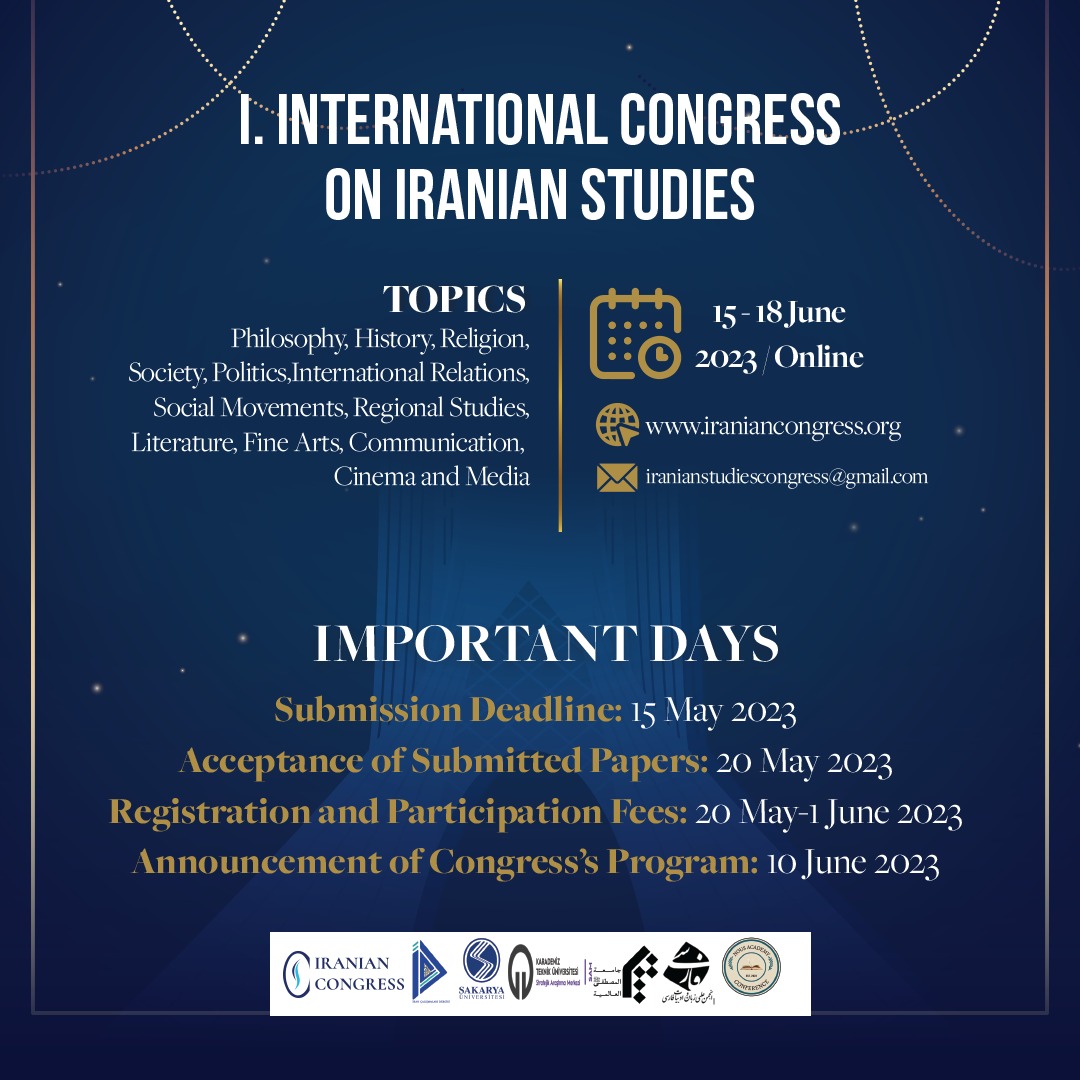Felsefede İsfahân Ekolü
Abstract
Isfahān School in Philosophy
The city of Isfahan, which is located in the central part of present-day Iran and has a long history, is a city that has developed in all aspects after it was declared the imperial capital during the reign of Shah Abbas I, who is considered to be the second most powerful Shah of the Safavids. Shi'ism became the official sect of the Safavid empire and Shah Abbas I, one of the Safavid Shahs, especially with his patronage of scholars, Shi'ite clergymen and Shi'ite students from different parts of the Islamic world, numbering in the thousands, turned to this city and turned it into the most important cultural, scientific and artistic centre of the period. For this reason, the city of Isfahān was nicknamed "Dar al-Ilmi Mashrik Zemin", which means the centre of knowledge of the East.
The so-called Isfahān school in the history of philosophy was also formed in this period, especially under the leadership of Mīr Dāmād, who became famous with the title of "Muallim-i Sālis", and with the contributions of names such as Mīr Findiriskī and Shaykh Bahāeddin Āmilī. In time, three philosophical schools emerged in this school: Hikmat-i Yemanî led by Mīr Dāmād, Hikmat-i Mütealiye founded by Mullā Sadrā, and Mullā Rajab Ali Tabrizī. The Isfahān school as a whole and these three schools, which developed within this school, accepted the Qur'ān, the knowledge narrated from the fourteen innocents, and the wisdom and knowledge of the fourteen innocents, in addition to the Peripatetic and Illuminationist philosophical traditions, as the source and basis, despite all the differences they harboured within themselves. This school was also accepted as a meeting place and point for different methods of thought, and was considered as a school that eliminated the dichotomy between religion and philosophy. Of course, this synthetic approach does not mean that the Isfahān school is a compilation of different methods of thought. In this school, just as bees produce honey by collecting pollen from different plant species, new philosophical issues were explained or new solutions were offered to existing problems by utilising different methods of thought. In the Isfahān school, the knowledge of truth was not treated as a theory of knowledge obtained only by reason. There is an approach that the knowledge of truth can also be acquired through reflection on the narrations from the Prophet and the Ahl al-Bayt, who are believed to have received information from the source of knowledge in an unambiguous way, and through spiritual experience. In other words, this school has an epistemological structure based on reason, revelation, and spiritual discovery, and revelational teachings and spiritual experiences are explained on a rational level in accordance with rational rules. The most important characteristic of the philosophers trained in the Isfahān school is their scientific inclusiveness. These philosophers were competent in rational and natural sciences and produced important works in different disciplines. Names such as Mīr Dāmād, Mīr Findiriskī, Mullā Sadrā, Mollā Rajab Ali Tabrizī, Mollā Muhsin Feyz-i Kāshānī, Mollā Shamsā Gīlānī, Sayyid Ahmad Alawī, Mollā Abdurrezzāq Lāhījī are the most important philosophers of the Isfehān school.
Key Words: Islamic Philosophy, Isfahān School, Hikmat-i Yemanī, Hikmat-i Mütealiye, Mīr Dāmād, Mollā Sadrā.
Published
Issue
Section
License
Copyright (c) 2023 IRANIAN CONGRESS

This work is licensed under a Creative Commons Attribution 4.0 International License.


